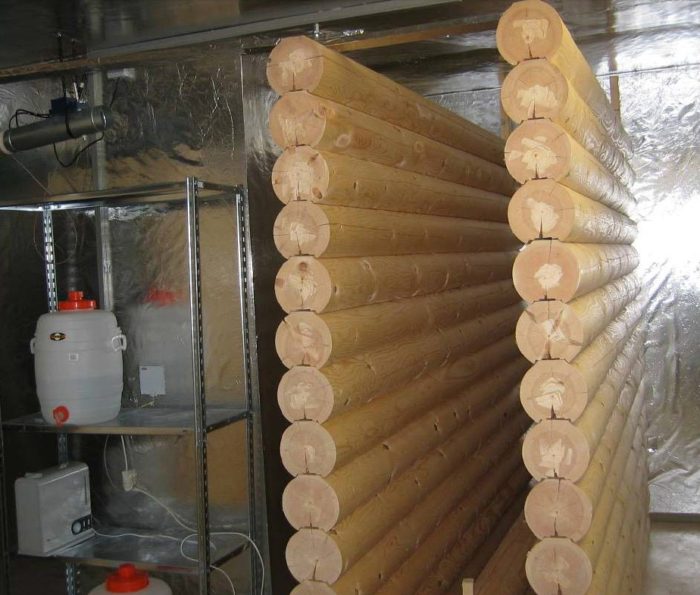
Image Credit: Fraunhofer Institut Bauphysik
Water causes all kinds of problems for buildings. When rain leaks into walls through a poorly flashed window sill, or when the humidity in summer air contacts a cold water pipe and condenses, mold or rot can easily develop.
One possible way to handle localized leaks or intermittent humidity spikes is to build with hygroscopic materials that provide hygric buffering and hygric redistribution. To say the same thing in simpler terms: installing building materials that can absorb and store water may help handle moisture events.
Hygroscopic materials are materials that readily take on moisture. Examples include brick, framing lumber, and cellulose insulation. Green builders who use natural materials sometimes point out that in a house with thick walls made of rammed earth, straw bales, or logs, these hygroscopic materials act as a hygric buffer.
Hygric buffering
A material that acts as a hygric buffer can store (and sometimes redistribute) moisture. Those who sing the praises of hygric buffers compare these materials to thermal mass. Just as thermal mass (for example, concrete) that is in contact with a home’s indoor air can act as a thermal flywheel, helping to even out spikes and troughs in the indoor temperature, so hygroscopic materials can act as a flywheel for humidity.
In other words, if a house has enough hygroscopic materials in contact with the indoor air, these materials can smooth out episodes of high and low indoor relative humidity. When the air is very humid, the materials can absorb moisture; and when the air is very dry, the materials will release moisture into the indoor air (by evaporation).
Hygric redistribution
In addition to their hygric buffering function, hygroscopic materials sometimes provide useful “hygric redistribution” — in other words, these materials can take on water and move the water away from a wet…
Weekly Newsletter
Get building science and energy efficiency advice, plus special offers, in your inbox.

This article is only available to GBA Prime Members
Sign up for a free trial and get instant access to this article as well as GBA’s complete library of premium articles and construction details.
Start Free TrialAlready a member? Log in















4 Comments
All very well and good, but
All very well and good, but what's the R-value per inch of
damp cellulose??
_H*
Response to Hobbit
Hobbit,
If your cellulose ever gets so wet that the R-value per inch of the cellulose is significantly degraded, your wall assembly or roof assembly has failed.
At that point, you have much bigger problems on your hands than a concern over R-value. You have a major flashing failure, roof leak, or plumbing leak -- or an assembly with an annual drying potential that is less than what is required to handle the assembly's annual moisture accumulation. And that's something you don't want.
Book him, Dano
I love the idea of our bulging book collections being our flywheels. If only my grandparents were alive - my grandmother spent the last 25 years of their marriage trying to get my grandfather to part with his collection of books in archaic German type.
It reminds me of Paul Eldrenkamp's proposal for the deep attic retrofit - shredding the contents of a client's attic in situ for loose fill insulation. I'm sure teddy bears, prom dresses and papier mache dragons all have excellent MBV's.
BUFFERED SOLUTIONS
Martin- Thanks for another informative and well written article.
Log in or become a member to post a comment.
Sign up Log in